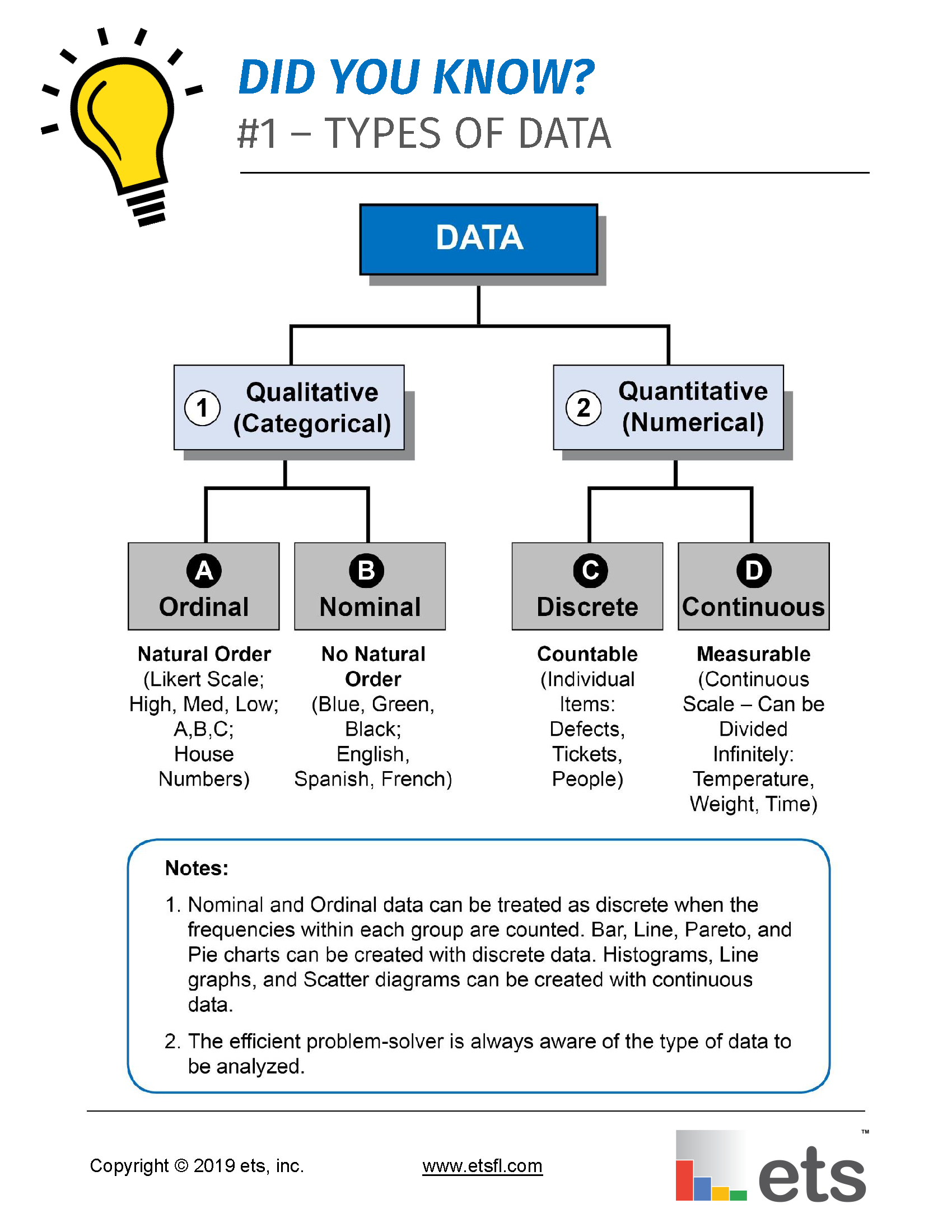Data comes in many forms. And because there can be so much of it, it’s crucial to be able to separate the signal from the noise quickly. Efficient problem solvers consider the types of data at each step of the process improvement journey. Whether defining, stratifying, or verifying, the kind of data you are dealing with dictates the best approach to take.
Why is data type important?
Data type dictates the most appropriate analytical tool to apply. When sharing your analysis or findings with an audience, the data type will also dictate the best chart for communicating.
What are the commonly accepted data types?
Data is typically divided into two major types-Qualitative and Quantitative. Further, within each of these, there are two sub-groups. This graphic below illustrates the two sub-groups of data.


